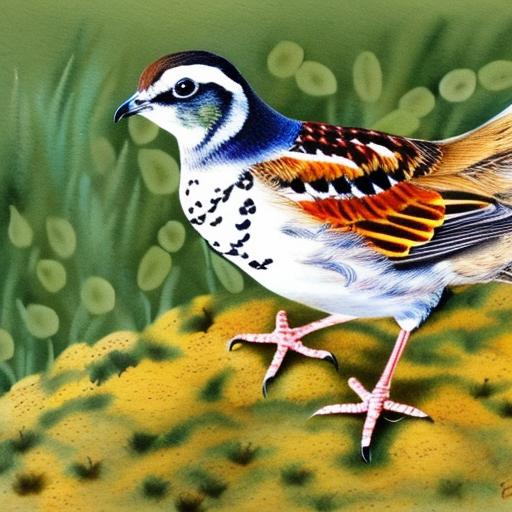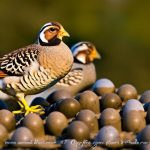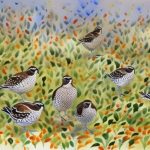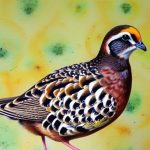Quail breeding has become increasingly popular in Australia due to the rising demand for quail meat and eggs. There are several quail breeds that are commonly raised in Australia, each with its own unique characteristics and traits. Quail breeding can be a rewarding and profitable venture for those who are interested in poultry farming, and with the right knowledge and resources, breeders can successfully raise healthy quail for commercial purposes or personal consumption. In this article, we will explore the popular quail breeds in Australia, their characteristics and traits, breeding and rearing practices, as well as the challenges and considerations that quail breeders face in the country. Additionally, we will discuss the regulations and guidelines that govern quail breeding in Australia, and the future outlook of quail breeding in the country.
Key Takeaways
- Quail breeding is a popular practice in Australia, with a variety of breeds available for enthusiasts.
- Popular quail breeds in Australia include the Japanese quail, Coturnix quail, and Bobwhite quail.
- Different quail breeds have unique characteristics and traits, such as size, egg production, and temperament.
- Breeding and rearing quail in Australia requires proper housing, feeding, and management to ensure healthy and productive birds.
- Quail breeders in Australia face challenges such as disease management, predator control, and market demand, requiring careful consideration and planning.
Popular Quail Breeds in Australia
In Australia, there are several popular quail breeds that are commonly raised for meat and egg production. One of the most popular breeds is the Japanese quail, also known as the Coturnix quail. Japanese quails are known for their fast growth rate, high egg production, and relatively docile nature, making them an ideal choice for commercial quail farming. Another popular breed is the Bobwhite quail, which is native to North America but has been successfully introduced to Australia. Bobwhite quails are prized for their flavorful meat and are often raised for hunting purposes as well. The King quail, also known as the button quail, is another popular breed in Australia. These small, colorful quails are often kept as pets due to their gentle nature and unique appearance. Other popular quail breeds in Australia include the Gambel’s quail, California quail, and Mearns quail, each with its own distinct characteristics and uses.
Characteristics and Traits of Different Quail Breeds
Each quail breed has its own unique characteristics and traits that make them suitable for different purposes. Japanese quails, for example, are known for their high egg production, with hens laying up to 300 eggs per year. They also reach maturity quickly, making them an efficient choice for meat production. Bobwhite quails, on the other hand, are prized for their flavorful meat and are often raised for hunting purposes due to their strong flying abilities. King quails are small and colorful, making them popular as pets, and they are also known for their gentle nature, making them easy to handle and care for. Gambel’s quails are known for their striking plumage and are often raised for ornamental purposes, while California quails are popular for their adaptability to different environments and Mearns quails are prized for their large size and delicious meat. Understanding the characteristics and traits of different quail breeds is essential for breeders to make informed decisions about which breeds to raise based on their specific goals and needs.
Breeding and Rearing Quail in Australia
Breeding and rearing quail in Australia requires careful planning and management to ensure the health and productivity of the birds. Quails can be bred using natural mating or artificial insemination, with breeders selecting breeding pairs based on desired traits such as egg production, meat quality, or coloration. Proper housing and environmental conditions are essential for successful quail rearing, with adequate space, ventilation, and protection from predators being important considerations. Quails require a balanced diet that includes high-quality feed and access to clean water at all times to support their growth and productivity. Additionally, regular health checks and disease prevention measures are crucial to ensure the well-being of the birds. Rearing quail chicks also requires specific care, including providing a warm and clean brooding environment, proper nutrition, and monitoring for any signs of illness or distress. By implementing proper breeding and rearing practices, quail breeders in Australia can maintain healthy flocks and achieve their production goals.
Challenges and Considerations for Quail Breeders in Australia
Quail breeders in Australia face several challenges and considerations that can impact the success of their operations. One of the main challenges is ensuring biosecurity measures to prevent the spread of diseases among quail flocks, which can have devastating effects on production. Predation is another concern, as quails are vulnerable to attacks from predators such as foxes, snakes, and birds of prey. Additionally, maintaining optimal environmental conditions within the housing facilities can be challenging, especially during extreme weather conditions. Market demand and competition are also important considerations for quail breeders, as they need to stay informed about consumer preferences and industry trends to remain competitive in the market. Furthermore, complying with regulations and guidelines related to quail breeding, animal welfare, and food safety is essential for breeders to operate legally and ethically. By addressing these challenges and considerations, quail breeders can develop strategies to mitigate risks and optimize their production practices.
Quail Breeding Regulations and Guidelines in Australia

In Australia, quail breeding is subject to regulations and guidelines that aim to ensure the welfare of the birds, food safety standards, and environmental sustainability. Breeders must comply with animal welfare laws that govern the housing, handling, transportation, and slaughter of quails to prevent cruelty and mistreatment. Additionally, food safety regulations require breeders to adhere to hygiene standards in the production and handling of quail meat and eggs to minimize the risk of contamination and foodborne illnesses. Environmental regulations also play a role in quail breeding operations, with requirements related to waste management, land use, and conservation efforts to minimize the ecological impact of poultry farming. By following these regulations and guidelines, quail breeders can contribute to sustainable and responsible farming practices while ensuring the quality and safety of their products for consumers.
Conclusion and Future of Quail Breeding in Australia
Quail breeding in Australia offers opportunities for commercial production, small-scale farming, pet keeping, and hunting purposes. With the diverse range of quail breeds available, breeders can select suitable breeds based on their specific goals and preferences. By understanding the characteristics and traits of different quail breeds, implementing proper breeding and rearing practices, addressing challenges and considerations, and complying with regulations and guidelines, quail breeders can establish successful operations that contribute to the poultry industry in Australia. The future of quail breeding in Australia looks promising as consumer demand for quail meat and eggs continues to grow, creating opportunities for breeders to expand their businesses and contribute to the country’s agricultural sector. As technology advances and research progresses, there may be further developments in breeding techniques, disease management, and sustainable farming practices that will enhance the efficiency and productivity of quail breeding in Australia. Overall, quail breeding has a bright future in Australia as breeders continue to innovate and adapt to meet the evolving needs of the market while upholding high standards of animal welfare and environmental stewardship.
If you’re interested in learning more about quail breeds in Australia, you might also want to check out an article on PoultryWizard about the best locations for placing a chicken coop. Understanding the ideal environment for your chickens can also provide valuable insights into creating a suitable habitat for quails. You can find the article here.
FAQs
What are the different quail breeds in Australia?
In Australia, some of the popular quail breeds include the Japanese quail (Coturnix japonica), the King quail (Coturnix chinensis), and the Bobwhite quail (Colinus virginianus).
What are the characteristics of Japanese quail?
Japanese quail are known for their small size, hardiness, and ability to lay a large number of eggs. They come in a variety of colors including brown, white, and tuxedo.
What are the characteristics of King quail?
King quail, also known as button quail, are the smallest of the true quail species. They are known for their colorful plumage and are popular for their gentle nature and ease of care.
What are the characteristics of Bobwhite quail?
Bobwhite quail are native to North America but have been introduced to Australia. They are known for their distinctive “bob-white” call and are popular for their game bird qualities.
What are the uses of quail breeds in Australia?
Quail breeds in Australia are primarily used for their eggs, meat, and as pets. They are also popular for their ability to control pests in agricultural settings.
Meet Walter, the feathered-friend fanatic of Florida! Nestled in the sunshine state, Walter struts through life with his feathered companions, clucking his way to happiness. With a coop that’s fancier than a five-star hotel, he’s the Don Juan of the chicken world. When he’s not teaching his hens to do the cha-cha, you’ll find him in a heated debate with his prized rooster, Sir Clucks-a-Lot. Walter’s poultry passion is no yolk; he’s the sunny-side-up guy you never knew you needed in your flock of friends!







